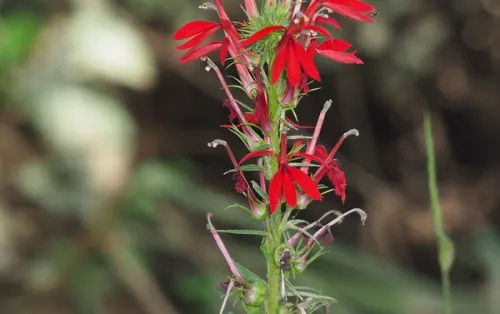Back to Glossary
Cardinal Flower
Lobelia cardinalis
Cardinal Flower's wands of crimson flowers are brilliant in the late summer garden. Its long, tubular flowers have evolved to be pollinated by hummingbirds, whose beaks reach deep for nectar while their foreheads get brushed with pollen. Butterflies are another frequent visitor to this flower. Cardinal Flower naturally occurs in wetlands and floodplains, so it can handle your yard's wet areas in addition to average garden soils. To prolong this plant's life, brush aside any leaves or debris that lay on its low-growing rosette of winter leaves as these are very sensitive to being covered.
Details
Height24” - 48”
Spread12"
Bloom SeasonJuly – September
Soil Types
Clay
Loam
Sand
Soil Moisture
Medium
Moist
Wet
Sun Exposure
Part Sun
Full Sun
Range Map
Available
Not available
Ecological Benefits
Maintenance Tips
- A surprisingly sensitive plant, your Cardinal Flower will be happiest and healthiest if its basal rosette of leaves is kept clear of mulch, leaves, or any other detritus. It is fine to mulch near a bed containing Cardinal Flower, but always: remember the rosettes!
- Cardinal Flower is relatively short-lived so consider allowing seedlings to take root and establish to perpetuate your yard's population
- SPRING - Dividing and replanting the rosettes of cardinal flower in spring can prolong the life of this short-lived perennial
- FALL - Once cardinal flower has gone to seed in the fall, brush aside any mulch at the base of the plant and gently scratch the soil surface. This will help the tiny seeds grow into new plants. Over the winter, cardinal flower persists as a low-growing rosette of green leaves. Keep it healthy by brushing aside any leaves or debris that cover it.


